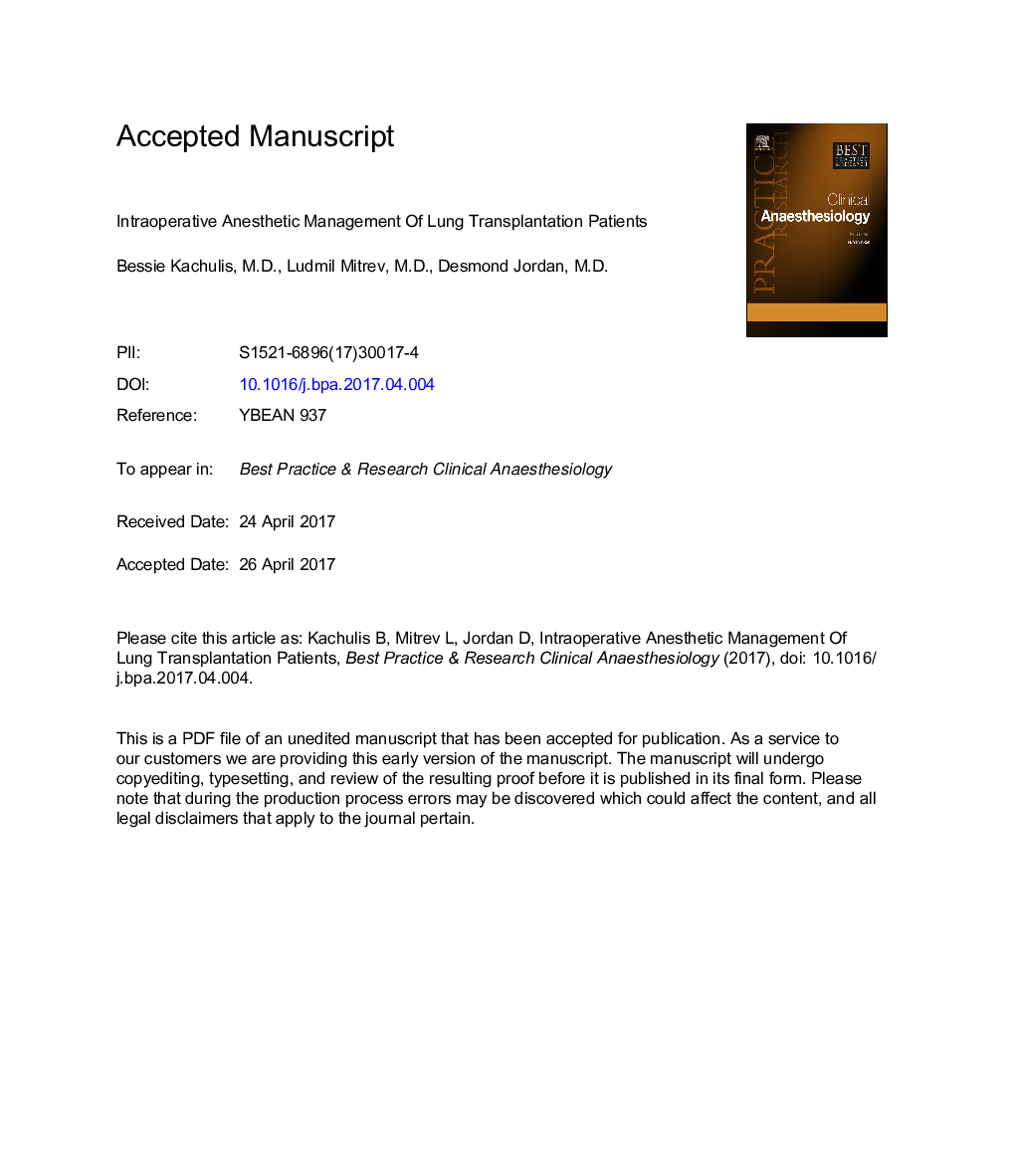| Article ID | Journal | Published Year | Pages | File Type |
|---|---|---|---|---|
| 8610931 | Best Practice & Research Clinical Anaesthesiology | 2017 | 40 Pages |
Abstract
Lung transplantation is a high-risk procedure that requires a highly trained cardiothoracic anesthesiologist and a considerable degree of vigilance. In the 50 years since the first lung transplantation, improvements in immunosuppression, preservation solutions, and surgical techniques and technologies have led to increased survival rates. The development of the extracorporeal circulatory membrane oxygenation allowed for bridge to transplantation and for donor organ recovery from primary graft dysfunction post transplantation [1]. In addition, changes in the criteria for lung allocation will cause the anesthesiologist to encounter older recipients with comorbidities that would have been disqualifying for transplantation a decade ago [2].
Related Topics
Health Sciences
Medicine and Dentistry
Anesthesiology and Pain Medicine
Authors
Bessie (Associate Professor of Anesthesiology), Ludmil (Assistant Professor of Anesthesiology), Desmond (Associate Professor of Anesthesiology),
